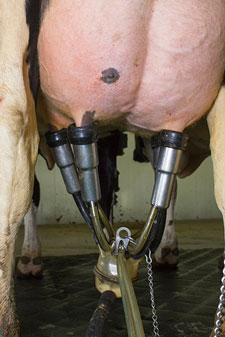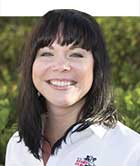 Cows love routine. Proper, repeatable milking procedures are your best friend when it comes to harvesting high quality milk and ensuring comfortable, productive cows.
Cows love routine. Proper, repeatable milking procedures are your best friend when it comes to harvesting high quality milk and ensuring comfortable, productive cows. As basic as it seems to some dairy farmers, an inconsistent routine at milking time may be contributing to low production or slow milk out times. Ask yourself if every employee in the parlor is following your dairy's Standard Operating Procedure (SOP) for milking routine to the letter. If you don't have an SOP for your milking routine, there is no time like the present to implement one. Correcting procedures in the parlor can improve overall efficiency, make happier cows and strengthen your bottom line.
A Fall 2013 Fact Sheet from University of New Hampshire Extension reiterates the importance of consistent milking procedures and provides a good baseline if you need to develop your dairy's SOP. Click here to view the fact sheet. A couple of reminders from the fact sheet:
Wear disposable gloves.
Your hands are covered with bacteria that can spread to the teat. If your gloves get dirty during milking replace them with a new pair. The cost of a fresh pair of gloves outweighs spreading bacteria to other cows every time.
Fore-stripping is still important.
Fore-stripping should not be done onto the floor as it can cause mastitis. Its crucial for allowing workers to check for mastitis, stimulating milk let-down and helping lower your somatic cell count by removing high somatic cell foremilk.
Washing udders is not recommended.
Washing udders may actually elevate chances of a mastitis infection if the water moves up the teat canal. If washing is required it's recommended to only wash the teats and to use clean water for each cow.
If there are a few improvements that could be made in your parlor, review the UNH fact sheet for proper timing and guidelines.

The author, Ali Enerson, was the special publications editor, responsible for books, plans, distribution of the e-newsletter and various internal communication pieces. She grew up on a 60-cow dairy in northwest Wisconsin, and is a graduate of University of Wisconsin–Madison with a degree in life sciences communications.








